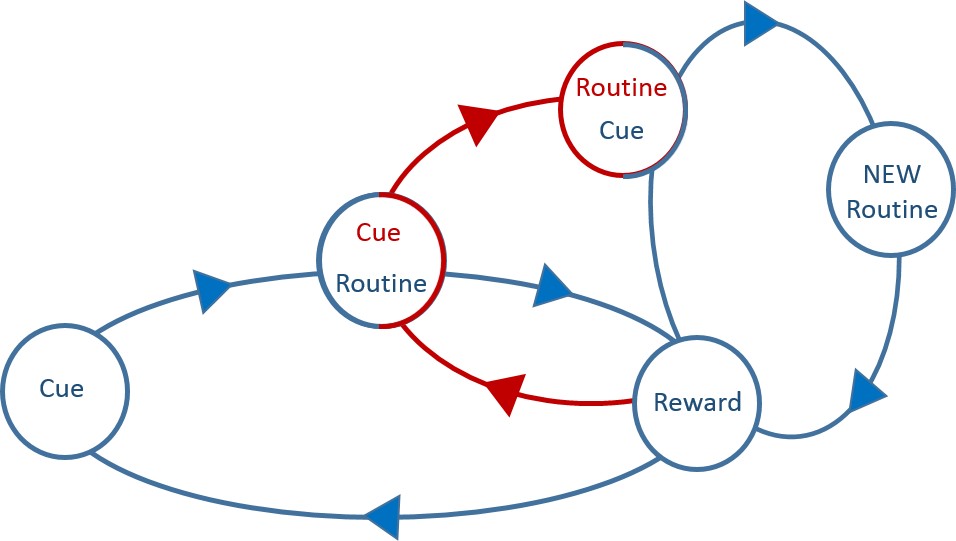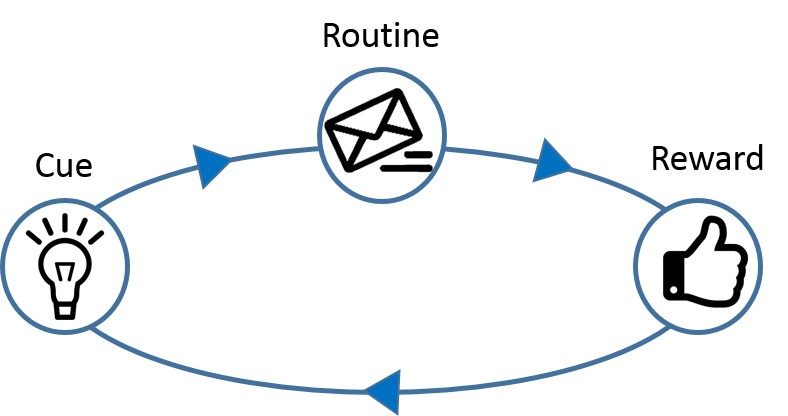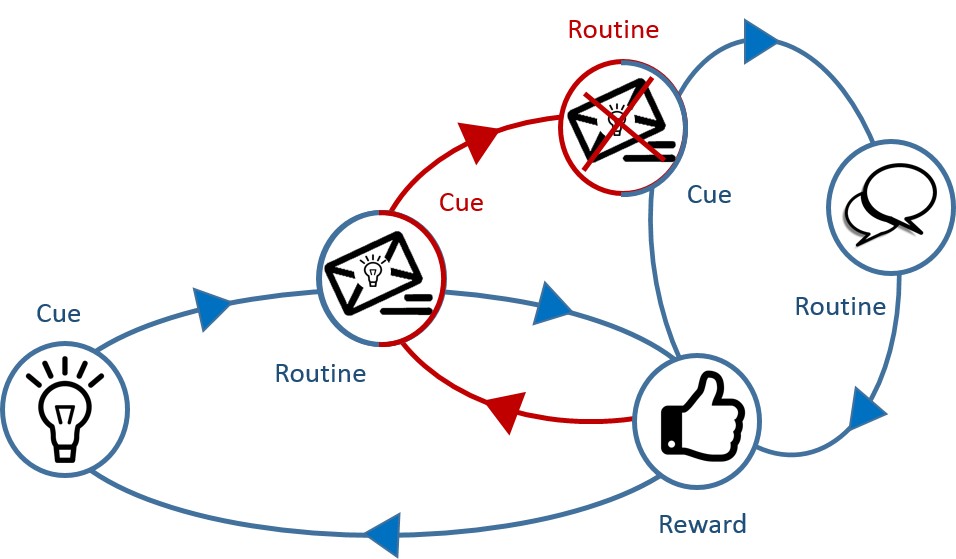Here’s a common scenario in organizations struggling to increase openness and collaboration:
Aaron figures out a work around in a finance system that will save time and money. Knowing it’s value, he emails the information to his manager, Susan. Susan acknowledges Aaron’s innovation in a glowing reply. Aaron continues to use the new process but the organization gains little.
Aaron’s organizational communication system has conditioned him to act automatically and maybe unconsciously. His habit is one where when he finds relevant information, he shares it in a way that provides him a reward. This is the Habit Loop Charles Duhigg wrote of in his book, “The Power of Habit: Why We Do What We Do in Life and Business“, and I think it holds the key to helping organizations advance their efforts to be more cooperative and collaborative.
Duhigg wrote of the powerful habit loops we all have, claiming that as much as 45% of our behaviors are unconscious habits; from how we brush our teeth to our drive to the office and maybe even how we communicate. The habit loop is defined as having a “cue” or trigger which begins a “routine” to achieve a “reward”. In his book he shared a negative habit story of going to the cafeteria at a certain time each day and buying a sugary treat. Surprise! After much analysis it wasn’t the donut being craved, it was socialization with peers. The reward for this routine of walking to the cafeteria each day around the same time was getting to chat with friends. To get healthier, one just needs to alter the routine so that socialization takes place in a calorie free context.
Companies moving to social platforms usually aren’t factoring in the habits and systems that reinforce these habits. Most come at deploying an ESN either by a large-scale roll-out with active C suite involvement or a grassroots, slower start focused on business use cases. Each of these can lead to adoption but not necessarily long-term behavior change which means the business value won’t be achieved.
In the simple organizational scenario I gave above, it’s Susan, the manager, that needs to address her habit loop not Aaron. Helping Aaron to share openly is a tall order, since the reward for his behavior is Susan’s approval and there may be an expectation system at play to reinforce this. Aaron has shared and may want to help others but his system reinforced, automatic action is to send an email to Susan because communication is up and down the silo only. This is very efficient for individual recognition but ineffective for altering company performance as we know. Here’s what Aaron’s possible habit looks like:
My advice – Susan needs to change her routine to change Aaron’s. In an organization our habits are often intertwined; one person’s routine is another’s cue. Susan needs to kindly reject Aaron’s informational emails as part of her routine change. She needs to get this into the open by pushing the email back to Aaron to post in the ESN. It won’t change Aaron’s habit if she posts it for him. If however Aaron begins posting directly on the platform, Susan will see and praise openly. In a perfect world Aaron changes his routine and still gets his reward, Susan is rewarded with a happy, motivated employee and others throughout the organization see the interaction and mimic (it’s Social after all).
Susan’s routine change can alter Aaron’s habit loop:
I realize that the example is small and simple but it’s meant to remind that there is more at play than CEO buy-in and cool tool features. Social is much more about psychology and sociology than technology. In a budding social organization, one person’s routine is another’s cue and it’s often this loop of interrelated actions where lasting transformation can happen like a socially supported chain reaction.
If your organization is an email focused, knowledge hoarding, top down, permission first culture – then examining the human systems and the collective habits working within these systems is the key to change. Systems->Behaviors->Beliefs->Culture.




